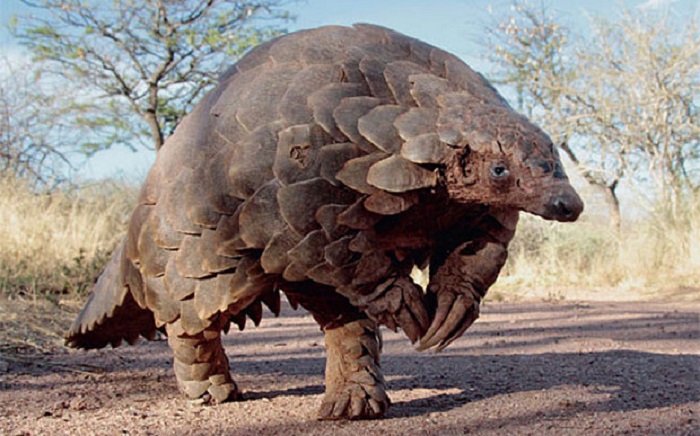“We all have a responsibility to protect endangered species, both for their sake and for the sake of our own future generations”- Loretta Lynch.
The dawn of industrialization inevitable saw the population decline of animals just as newton stated, “Every action has an equal and opposite reaction.” Man has strayed into territories inhabited by animals and in our efforts to expand and grow have depleted their resources, thus effecting their food chain. Deforestation, a choice made by man to widen their work-space perimeter has radically influenced the survival of a few species who are already threatened by poachers who seek commercial gain from making animals raw materials by trade. The fact that we cannot ignore is that the more species hitting the brink of extinction, the more the surrounding ecosystem suffers, leading to a complete or rather whole degradation of life on earth. Amongst the many, here are 30 of the most endangered animals on earth, animals that have faced the plight caused by the greed of some while a few others have given their life to unshackle this crude trend.
1. Black Rhino
Found predominantly in eastern and central Africa, the population of this species rapidly declined since the dawn of the European colonization in Africa. During the early 19th century, Rhinos were looked up on as a vermin or threat to civilization and coming across the wretched fact that at least five to six rhinos were killed a day was the norm. Since the early 90’s, the population of these splendid creatures has slowly but steadily risen to just over 5000 all because of the conservatory measures taken by the government and several organizations, but this oldest group of mammals are still critically endangered.
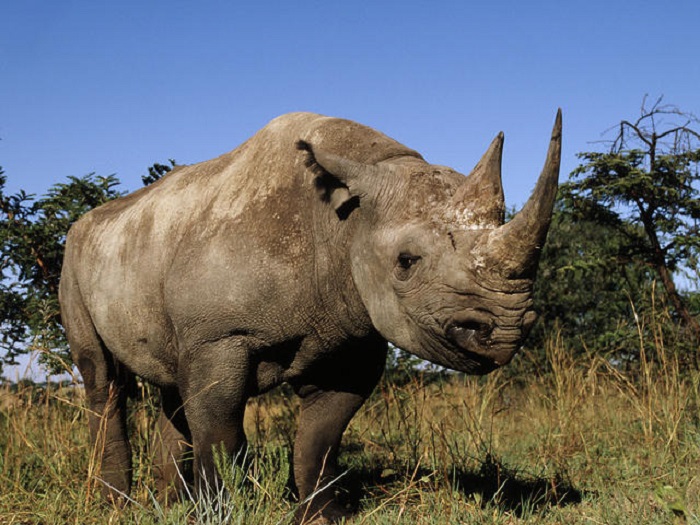
Photo Credit http://www.worldwildlife.org/species/black-rhino
2. Cross River Gorilla
Similar to the western gorillas in appearance barring the subtle differential dimensions of the skull and teeth, the cross river gorillas are found mostly spotted in the montane and rainforests regions of Nigeria and Cameroon. Though poaching these animals is illegal in these regions, it has not stopped poachers from making these critically endangered their prey for industrial purposes. Though scientist set out on a mission to count these gorillas, it wasn’t possible as the gorillas were wary of the presence of humans and hence scientist opted to counting them by scrutinizing their nests. An approximate of only 300 cross river gorillas is known to exist putting them into the category of critically endangered.
Endangered Animals 1: Photo Credit https://en.wikipedia.org/wiki/Cross_River_gorilla
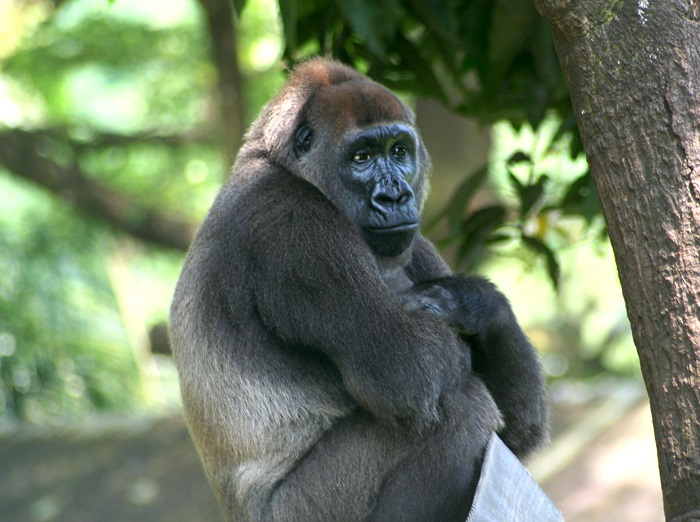
Photo Credit https://en.wikipedia.org/wiki/Cross_River_gorilla
3. Hawksbill Turtle
One of the few reptiles that have existed for over 100 million years, the Hawksbill turtle is named so for its narrow beak and the fact that it has a distinct pattern on its shell has lured hunters to make a quick buck. The shells are sold in the form of ornaments and jewelry and the market for the same in central Asia is thriving leading to the drastic decline in population of these turtles. The population of these is now just tipping over 20,000.
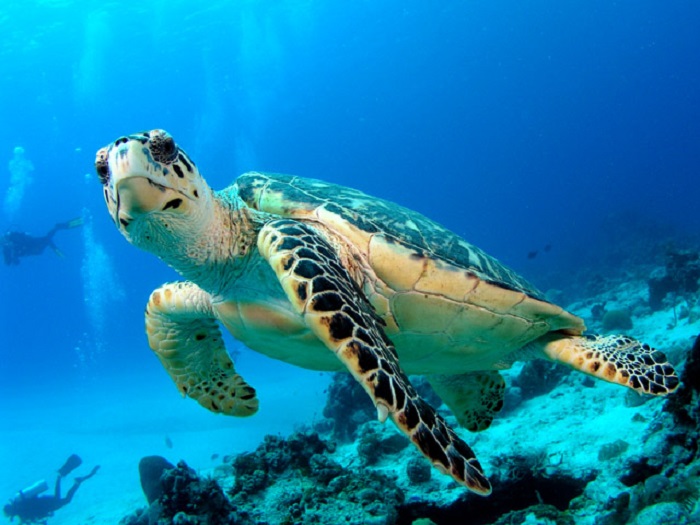
Photo Credit https://melinabeachturtlehatchery.wordpress.com/
4. Amur Leopard
Poached for their spotted fur which can fetch up to a $1000 in the market, the Amur Leopard unlike the other leopards are not found in Africa but in the temperate zones of far-east Russia. Like their brothers, the Amur’s can run at a boggling speed of 37miles/hour and can jump a lengthy distance of 19 feet horizontally and 10 feet vertically. As of 2007, the count of these cats was 30 but surprisingly has risen to 57, almost double as of now in Russia and an additional dozen in the adjacent regions of China.
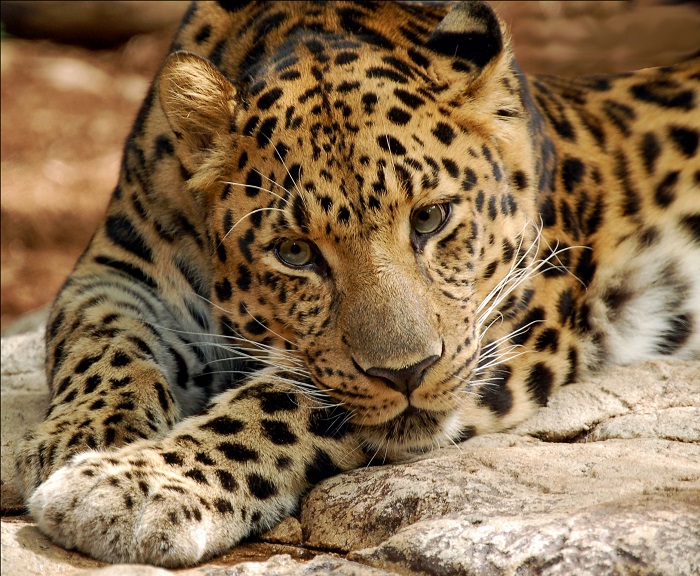
Photo Credit https://en.wikipedia.org/wiki/Amur_leopard
5. Pangolins
These nocturnal creatures are armored by scales from head to tail and when threatened, it rolls up into a ball covering its head and exposing only its scales to the predator. With the meat of Pangolins suiting the palate of the Africans, it is known that there is a steep decline in the population of these creatures and their scales too are been sold in the markets for commercial gain. Though the exact numbers of the existing creatures are not certain, they have been categorized as critically endangered as a sharp decline in their numbers have been observed in most regions of Africa.
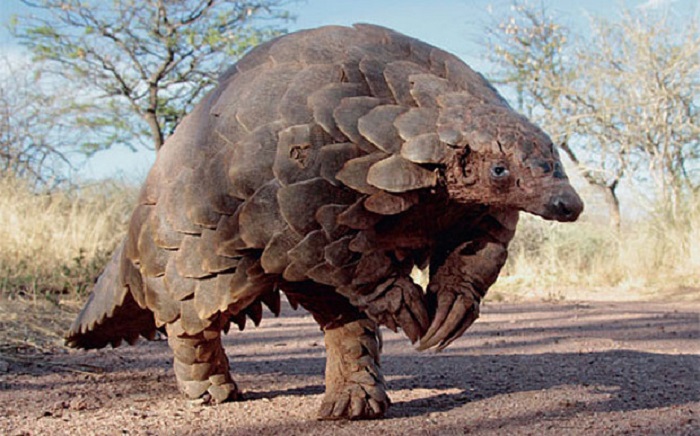
Photo Credit http://www.telegraph.co.uk/news/earth/wildlife/11374800/Pangolins-13-facts-about-the-worlds-most-hunted-animal.html
6. Saola
Similar in appearance to the antelope, the Saola was discovered in North Vietnam in 1992, making this the first mammal to be discovered in 50 years. The Saola can be distinguished by its unusually long skull and long parallel horns. Spotting this animal is a rarity in North Vietnam and to add to it, its habitual loss has resulted in its sharp decline in numbers with researchers pointing out that there could be just over a hundred Saolas existing as of now.
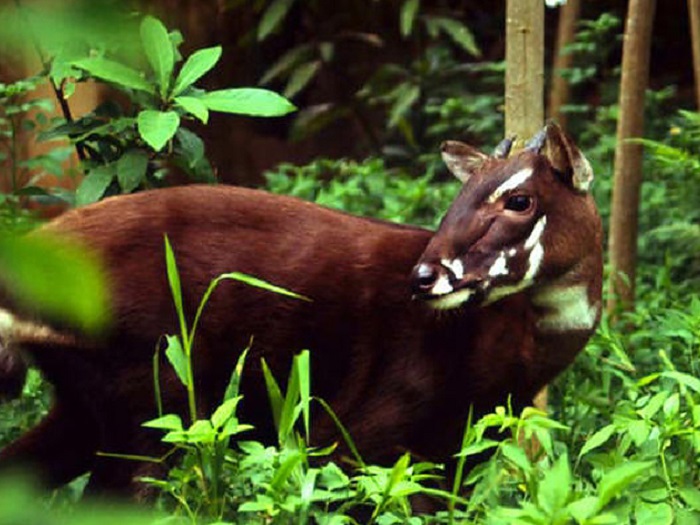
Photo Credit http://www.konicaminolta.com/kids/endangered_animals/library/field/saola.html
7. South China Tigers
Rumored by scientist to be “functionally extinct” as they have been hardly seen by people in decades, these subspecies of tigers were once estimated to have a population tipping over 4000 in the 50’s but steadily declined to around 30 – 50 by 1996 as a result of hunting as the locales looked at tigers as a threat. Though they are scarcely seen in China, in areas like Bhutan there are more than a hundred existing cats.
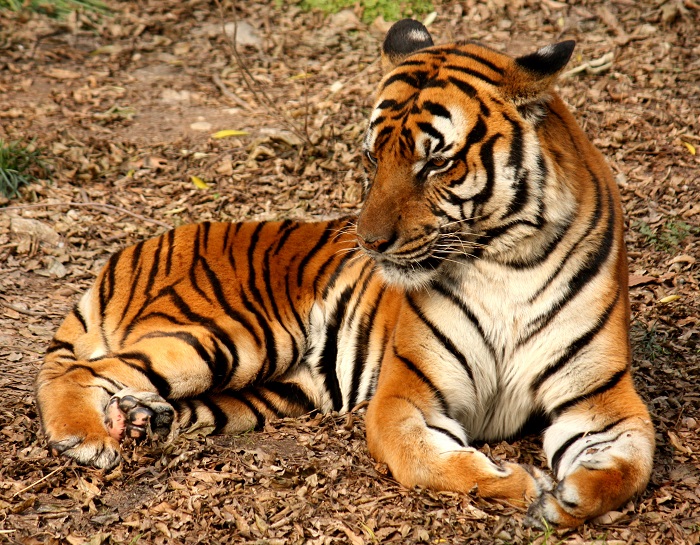
Photo Credit https://en.wikipedia.org/wiki/South_China_tiger
8. Sumatran Elephants
Predominant in Sumatra’s Riau province, these elephants have been restricted to just 2800 in number due to habitual loss as a result of industrial encroachment and human-elephant conflict. According to researchers, it is imperative to save this species as they assist in depositing seeds as they feed on a variety of plants and animals and then carry the seeds which invariably contribute to the sustenance of the eco system.
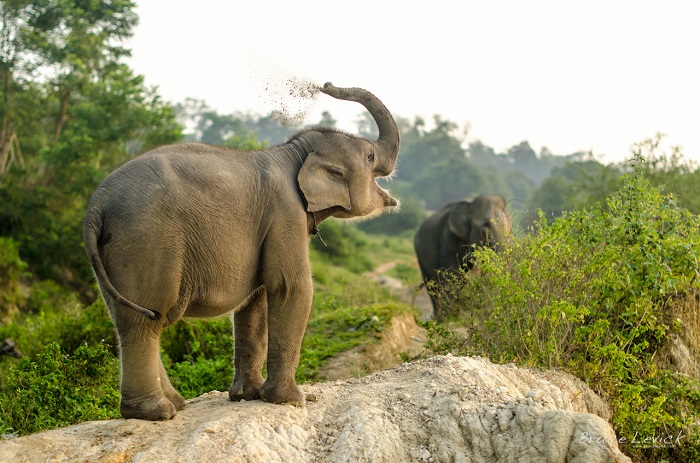
Photo Credit http://www.berdiri.org/wildlife/sumatran-elephants/
9. Vaquita
Vaquita is the most endangered cetacean in the world amongst whales, dolphins and porpoise with only a hundred left. Discovered in 1958, within half a century, this species is already on the brink of extinction with almost half of them falling prey to illegal fishing using gillnets in the last three years. Without the ban on gillnets enforced, this species will certainly perish in no time.
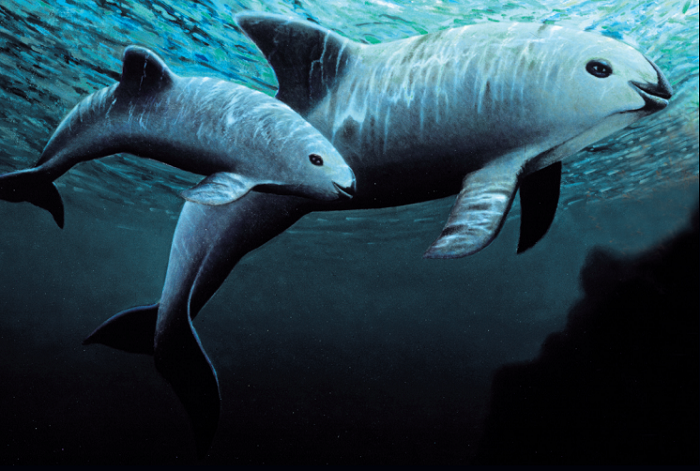
Photo Credit https://www.oceanfdn.org/blog/vaquita-fast-lane-extinction
10. Sumatran Orangutan
These arboreal creatures have been categorized as critically endangered as there are only 7,800 of them surviving. The depletion of the forest cover in the Sumatran region is the main culprit behind the threat of extinction for these Orangutans and their extinction would also mean the end of certain plant species as they are known to carry and deposit seeds as well.
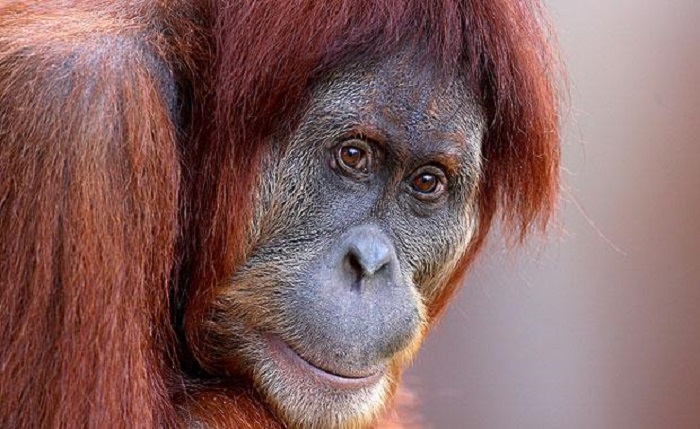
Photo Credit http://www.zoo.org.au/melbourne/animals/sumatran-orang-utan
11. Yangtze Finless Porpoise
Predominant in the Yangtze River, the longest river in Asia and one of the only two in the world that plays host to dolphins, the Yangtze Finless Porpoise’s numbers have steadily decreased to 1800 due to human activity in the river and lack of food supply as humans have exhausted the amounted of fish in the river for commercial gain. The Yangtze Finless Porpoise is known to have a mischievous smile and intelligence as good as a gorilla.
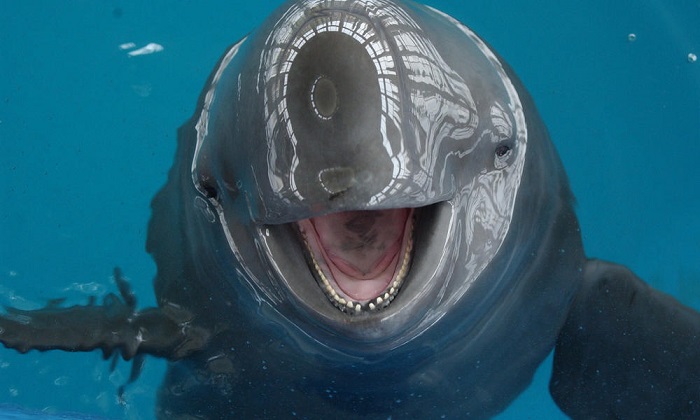
Photo Credit http://www.worldwildlife.org/stories/saving-the-finless-porpoise
12. African Wild Dog
Classified as one of the most endangered mammals, the African wild dog is found in Southern Africa and have only up to 5,500 existing. The sudden decline in their numbers is due to their conflict with humans, diseases and interference with their food chain as humans have encroached lands which their preys can be found. Habitual loss is another factor.
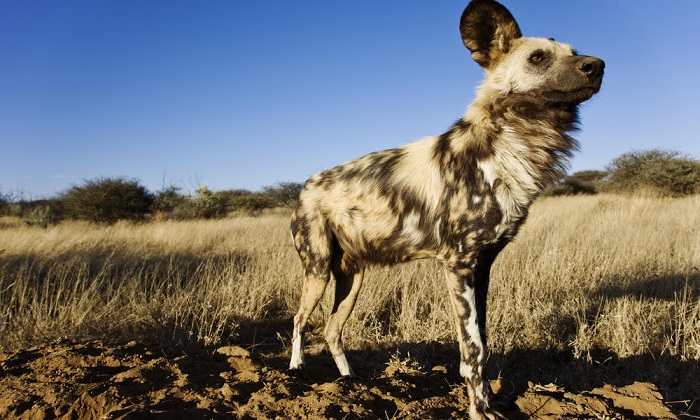
Photo Credit http://www.worldwildlife.org/species/african-wild-dog
13. Black Spider Monkey
Also known as red-face monkeys, these are found in the northern part of the Amazon rain forests. The depletion of the forest covers due to human activity and poachers have resulted in this drastic 30% population drop making them an endangered species as well.
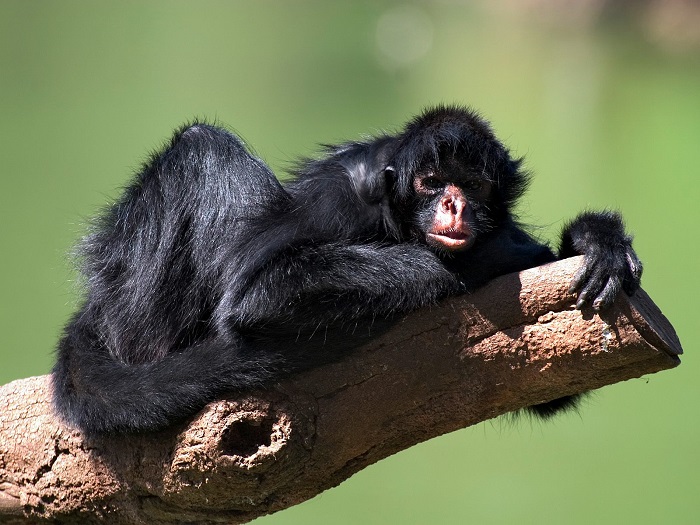
Photo Credit http://fullhdwp.com/black-faced-spider-monkey-wallpaper/
14. Bengal Tiger
Found in the mangrove forests of the Sundarbans in Bengal and the engulfing states, the Bengal tiger is now 2500 in number and initiation of the Tiger reserves in India has made sure that the number has been sustained. Though the government has made progressive steps to preserve this majestic species, illegal wildlife trade, loss of habitat and preys have posted a serious threat to their survival even now.
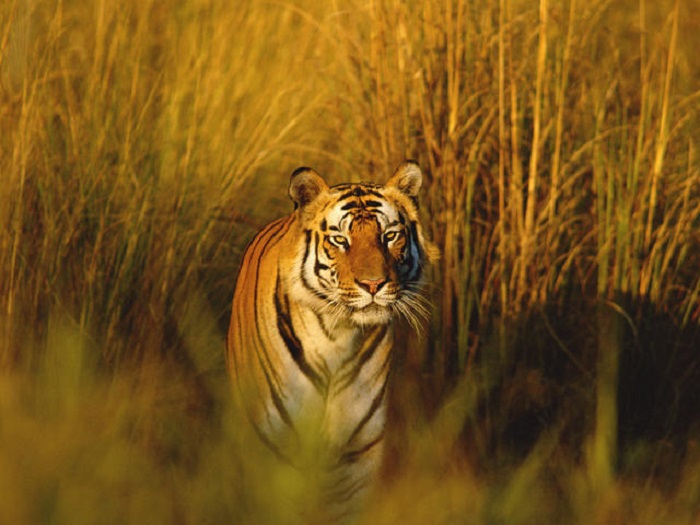
Photo Credit http://www.worldwildlife.org/species/bengal-tiger
15. Black Footed Ferret
Once on the brink of extinction, over the past three decades serious efforts have been made by conservatives, organizations and governments to give this mammal a second chance at survival. Now with just 300 still existing, habitat loss and health of grasslands still pose a threat to their future existence.
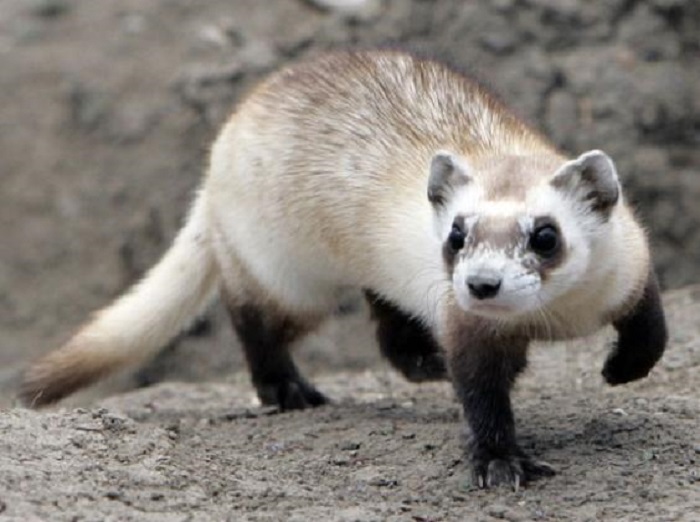
Photo Credit http://sites.psu.edu/gamble015/2015/04/15/black-footed-ferret/
16. Blue Whale
The largest and loudest animal in the world, the blue whale’s existence was severely threatened by commercial whaling in the 50’s and though it was termed illegal in 1966, the soviets persisted the with killing of whales. Though it is now not the main threat, ship strikes, lack of Krills which they feed on, and climate change continuously pose a threat to their survival. As per a recent count, around 10,000 to 25,000 still exist.
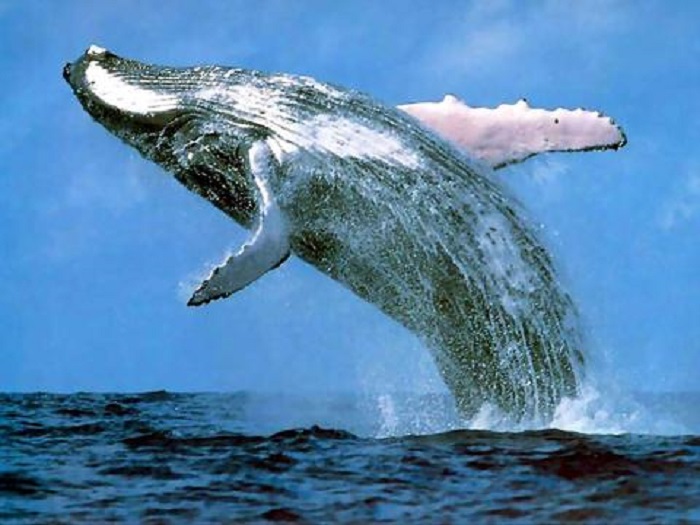
Photo Credit https://designeranimals2011.wikispaces.com/Blue+Whale
17. Bonobos
Though similar to chimpanzees, Bonobos too share 97% similar genetic code to humans and only in 1929 were they categorized as different to chimps. The exact surviving number is not known as they are reclusive from human settlements but it is assumed that there are up to 50,000 living individuals. Habitual loss, civil unrest and poverty amongst the human settlement around their habitat have been the primary reason behind their steep population decline as they are hunted by the locales for their meat. Their slow rate of reproduction is another critical factor as to why these species might soon go extinct.
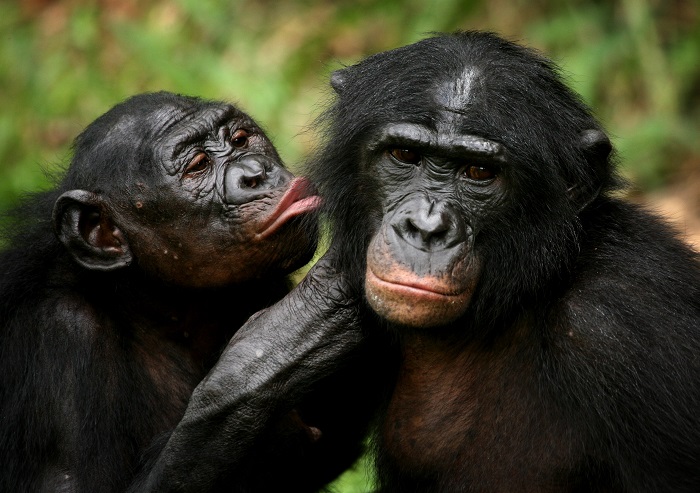
Photo Credit http://www.ibtimes.com/endangered-bonobos-further-threatened-forest-loss-poaching-study-1487646
18. Galápagos Penguin
These are the only penguins found north of the equator and on the archipelago on the pacific, Galapagos. Here, pollution, climate change and diseases carried by dogs are the only threatening factor to their survival. With a count less than 2000, climate occurrences like the El Nino have pushed their mortality rate up to 77%.
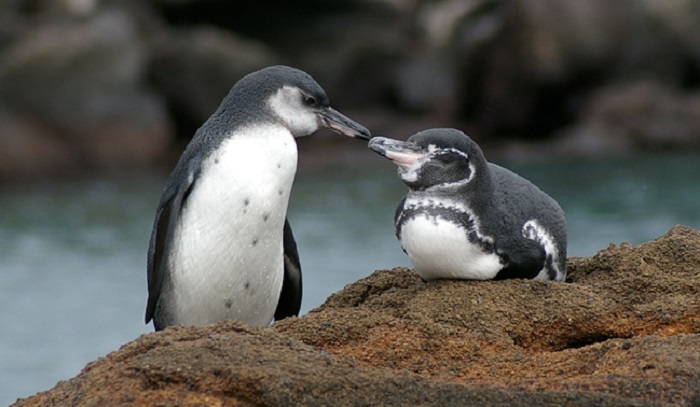
Photo Credit http://www.galapagos.org/conservation/increasing-the-galapagos-penguin-population/
19. Mountain Gorilla
As the name applies, this breed of gorillas is found in montane regions between 8000 to 13,000 feet above sea level. Their thick fur acts as an insolation during winters and despite the fact that this species can acclimatize to harsh conditions, civil unrest and human encroachment has pushed them further up the mountains making them susceptible to freezing temperatures. Though as of 1989 there were only 620 individuals, conservatory efforts have ensured that the numbers have steadily increased to 786 as of now.
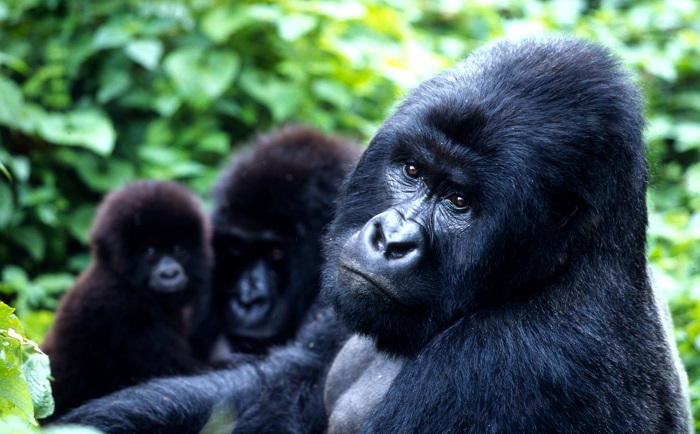
Photo Credit http://wwf.panda.org/wwf_news/?206716/Mountain-gorilla-population-grow
20. Sea Lions
Found off shore and on sandy beaches, the Sea lion population has dropped from 300,000 to less than 100,000 over the past few decades. Despite conservatory efforts, sea lions are susceptible to climate changes, which affect them and their prey, causing the almost irreversible down-line trajectory. Commonly found on the archipelago, Galápagos, sea lions are known to settle on boats rested by the shores, sometimes making them sink. In order to prevent their possessions from capsizing, Fishermen draped their boats with barb wires which inevitable cause injuries to these sun bathing mammals and yet being another reason why the population of Sea lions is steadily decreasing.
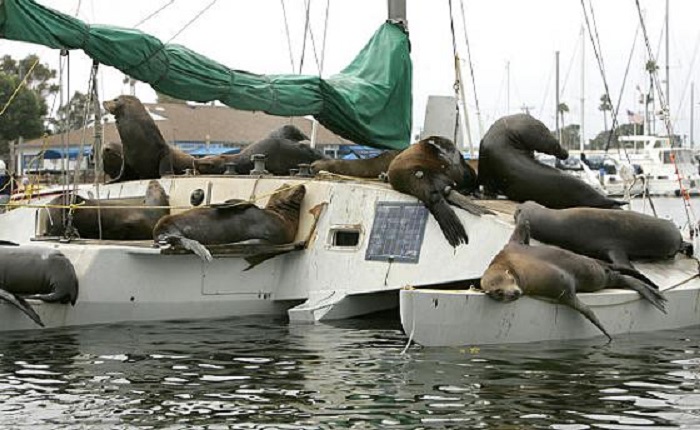
Photo Credit http://www.ocregister.com/articles/sea-109208-lions-boat.html

